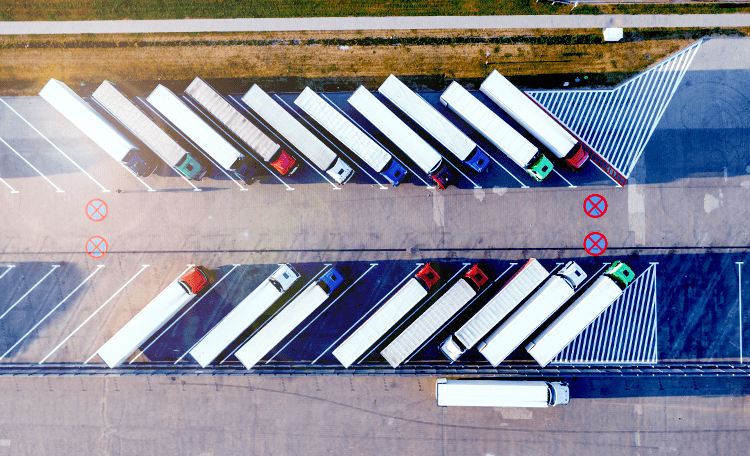Seoul MarketBeat
Suki Kim • 29/08/2025
Cushman & Wakefield MarketBeat reports analyze quarterly economic and commercial real estate activity including supply, demand and pricing trends at the market and submarket levels.
Retail: The citywide high street vacancy rate stood at 15.2% in Q2 2025, up 0.1 pp q-o-q but down 0.8 pp y-o-y. Despite ongoing domestic and external economic uncertainty and subdued domestic consumption, the vacancy rate has remained stable at around 15% over the past year. Cheongdam submarket recorded the most notable vacancy shift this quarter, falling 2.3 pp q-o-q.
Office: In Q2 2025, the average vacancy rate for Grade A office buildings rose by 0.1 percentage points (pp) quarter-over-quarter to 4.1%, while the average rent increased by 2.2%, largely driven by rental growth in the GBD area. Vacancy rates in both the CBD and YBD remained in the 4% range, primarily due to new supply and vacancies in recently refurbished or newly delivered office buildings. In contrast, new buildings in the GBD benefited from pre-leasing activity by major tenants, contributing to upward pressure on rents in the district. Looking ahead, the remodeling of INNO88 in the CBD is expected to be completed in the second half of the year.
Capital Markets: In Q2 2025, a total of 26 commercial real estate transactions were recorded, with the total investment volume reaching approximately KRW 5.8 trillion. The office sector led the market, accounting for 88% of all transactions, with active trading centered on mid- to large-scale assets in the CBD and GBD areas. In contrast, the logistics sector saw only two transactions, and the total investment volume declined sharply from the previous quarter. Transactions in the hospitality sector continued in line with the recovery in tourism demand, while retail transactions occurred evenly across major retail districts in Seoul.
Logistics: In the first half of 2025, the Greater Seoul logistics market experienced a marked slowdown in supply and investment. New supply totaled approximately 530,000 sqm, down 73% y-o-y, while transaction volume fell 45% to KRW 1.5 trillion. Amid growing interest from global investors, transactions were limited and concentrated on core assets. In the leasing market, demand for dry logistics centers outperformed that of cold storage.
Data Centre: In H1 2025, the Greater Seoul Area (GSA) data centre market maintained steady growth, with both operational capacity and the development pipeline continuing to expand. While the GSA is transitioning from cluster-focused growth to more decentralised development, Ulsan, Busan, and Gangwon are emerging as new hubs for AI and hyperscale facilities. On the investment side, investors continued to acquire land to support future expansion. Meanwhile, the Notice on Direct Electricity Trading in Distributed Energy Specialized Areas was enacted, but delays in zone designation and regulatory uncertainty have limited the effectiveness of relocating demand outside the capital.
Learn more by clicking our most recent Seoul MarketBeat reports below.
Office: In Q2 2025, the average vacancy rate for Grade A office buildings rose by 0.1 percentage points (pp) quarter-over-quarter to 4.1%, while the average rent increased by 2.2%, largely driven by rental growth in the GBD area. Vacancy rates in both the CBD and YBD remained in the 4% range, primarily due to new supply and vacancies in recently refurbished or newly delivered office buildings. In contrast, new buildings in the GBD benefited from pre-leasing activity by major tenants, contributing to upward pressure on rents in the district. Looking ahead, the remodeling of INNO88 in the CBD is expected to be completed in the second half of the year.
Capital Markets: In Q2 2025, a total of 26 commercial real estate transactions were recorded, with the total investment volume reaching approximately KRW 5.8 trillion. The office sector led the market, accounting for 88% of all transactions, with active trading centered on mid- to large-scale assets in the CBD and GBD areas. In contrast, the logistics sector saw only two transactions, and the total investment volume declined sharply from the previous quarter. Transactions in the hospitality sector continued in line with the recovery in tourism demand, while retail transactions occurred evenly across major retail districts in Seoul.
Logistics: In the first half of 2025, the Greater Seoul logistics market experienced a marked slowdown in supply and investment. New supply totaled approximately 530,000 sqm, down 73% y-o-y, while transaction volume fell 45% to KRW 1.5 trillion. Amid growing interest from global investors, transactions were limited and concentrated on core assets. In the leasing market, demand for dry logistics centers outperformed that of cold storage.
Data Centre: In H1 2025, the Greater Seoul Area (GSA) data centre market maintained steady growth, with both operational capacity and the development pipeline continuing to expand. While the GSA is transitioning from cluster-focused growth to more decentralised development, Ulsan, Busan, and Gangwon are emerging as new hubs for AI and hyperscale facilities. On the investment side, investors continued to acquire land to support future expansion. Meanwhile, the Notice on Direct Electricity Trading in Distributed Energy Specialized Areas was enacted, but delays in zone designation and regulatory uncertainty have limited the effectiveness of relocating demand outside the capital.
Learn more by clicking our most recent Seoul MarketBeat reports below.
CURRENT MARKETBEATS

MarketBeat
Cushman & Wakefield's Q3 2025 Seoul Retail MarketBeat report is now available to download. Please click on the link to read our latest report.
Suki Kim • 04/12/2025

MarketBeat • Investment / Capital Markets
Cushman & Wakefield's Q3 2025 Seoul Investment MarketBeat report is now available to download. Please click on the link to read our latest report.
Suki Kim • 05/11/2025

MarketBeat
Cushman & Wakefield's Q3 2025 Seoul Office MarketBeat report is now available to download. Please click on the link to read our latest report.
Suki Kim • 31/10/2025

Insights
Seoul Data Centre Market Report
Cushman & Wakefield's 1H 2025 Seoul Data Centre MarketBeat report is now available to download. Please click on the link to read our latest report.
Suki Kim • 28/08/2025

MarketBeat • Supply Chain
Cushman & Wakefield's 1H 2025 Seoul Logistics MarketBeat report is now available to download. Please click on the link to read our latest report.
Suki Kim • 07/08/2025
Related Insights
Research • Economy
2025 Korea CRE Market Outlook Report
The office sector demonstrated strong performance, supported by stable rents and yields, while the logistics sector continued to see transactions involving prime centers and NPLs, despite ongoing oversupply challenges.
Suki Kim • 18/12/2024

Research • Workplace
2024 Korea Commercial Real Estate Market Outlook Report
This report provides an overview of the current domestic economy using macroeconomic data and presents a 2024 outlook on the commercial real estate market for key sectors of the industry.
Jin So • 18/12/2023

Research • Workplace
Asia Pacific Office Outlook 2023
Supply, Demand, Vacancy and Rent: A look at the fundamentals underpinning Asia Pacific’s key office markets in 2023 and beyond.

